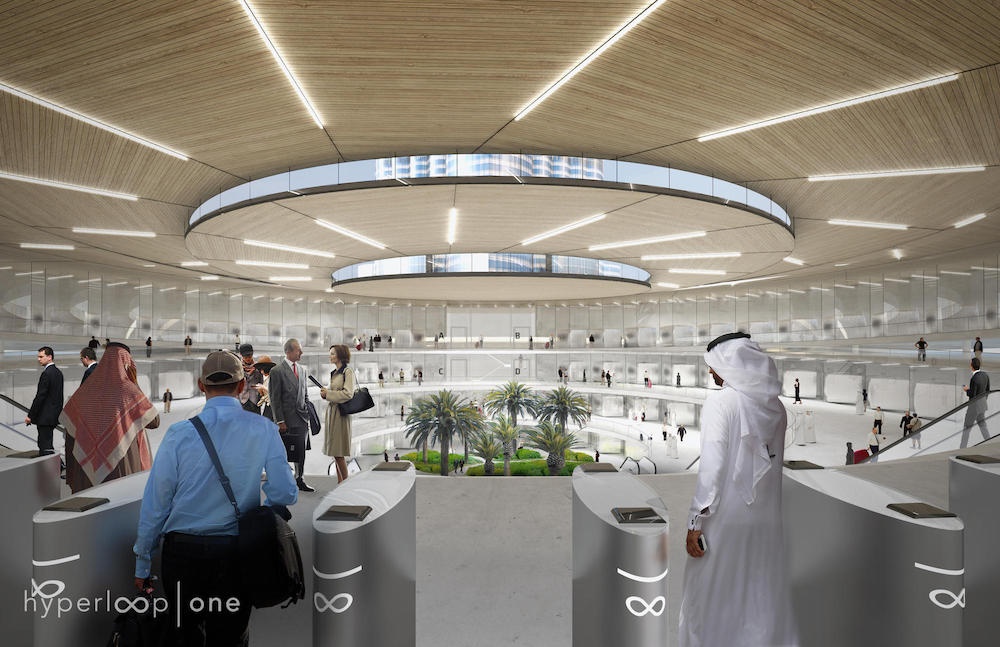What I know about the future of high-speed transport: Colin Rhys

In late 2016, the UAE’s first-mover deal with high-speed transport system Hyperloop promised commuters to travel from “Dubai to Abu Dhabi in 12 minutes” by 2020.
Unsurprisingly that was a little premature.
In February 2017, Mattar Al Tayer, director general and chairman of the board of directors at Dubai’s Roads and Transport Authority (RTA), shared more realistic on-the-ground developments. Under the Dubai Future Accelerators Program mandate, the RTA’s MoU with Hyperloop would assess the economic and infrastructural feasibility of the company’s technology across the UAE.

As the technology itself still pends safety certifications and testing, the RTA and Hyperloop have begun provisional studies to assess the impact it would have on the UAE, as well as suggested Dubai routes that would pilot it.
Still, Colin Rhys, Hyperloop One’s creative officer, has high hopes for the high-speed system launching at scale in the UAE “in the early 2020s”. Talking to Wamda, Rhys insisted that a transport future with flying cars is not so far-fetched, but perhaps further than he would like it to be. “This is the era of moonshots. I don’t think there is a misconception around the future of transport. Never has it been so possible to have flying cars, or Hyperloops, or drone transport. Other than teleportation – which even itself is becoming possible – I don’t see any idea as too unrealistic today,” Rhys said.
Business models across the supply chain need to be revamped. I think the misconception is [believing that we should continue] to employ 60- to 70-year-old technologies. We continue to look backwards on how to implement older technology rather than looking forward.
Take ships for example. People are used to waiting for containers for 45 to 60 days to ship from China to the US. If you say, ‘I can get you that container in five days’, that won’t benefit them unless they are willing to change their own business model. So you see how the technology is so disruptive in the case of Hyperloop, that it affects everybody down the supply chain. It’s very hard to change and pivot your entire business model if you are a 50-year-old shipping company.
Regulatory pushback will slow down high-speed transport. The challenges for Hyperloop are largely contained inside the regulatory environment; because no one’s ever tested and certified a Hyperloop system before. I see the first challenge in convincing global regulators that this is a safe and available technology in the time scale that we want to roll it out. We can’t be spending the next 15 to 20 years designing Hyperloop policies. People need it today. The current transportation modes are congested.
Organizations and entities are creating Hyperloop departments inside government bodies to study this system. The EU transportation department is including us in the innovation budget, not transportation, because we are a technology and engineering company. The group that we are moving the fastest with, and is the most supportive and most collaborative, has been the RTA.

It can only work as part of a network. Airbus recently launched their modular flying vehicle, and that’s something that is really inspiring for us because we see huge integration opportunities with them. Their ability to come and pick up one of our pods, and transport those pods somewhere else, that’s huge. But, think about how much money and time Airbus had to invest to be able to produce that system; because once you see all the auxiliary benefits come around in implementation in the Hyperloop system, everybody can benefit. The way that Hyperloop works best is as a network. The GCC can be a series of metro stops.
It will be mass, and it will be cheap. Hyperloop is not a replacement for any one mode of transportation. It’s the key that links them all together. Our number two challenge is mass adoption; because it’s going to take people a long time to trust this system. If you think of planes, people became very used to planes through WWI and WWII. And when the passenger plane came about, they’d already seen planes for a decade. The first time you step onto a Hyperloop here in Dubai, you’ll never have done it before. Education is key. Hyperloop will be the same cost as public transport. It is not a system that’s built for the elite or the wealthy.

